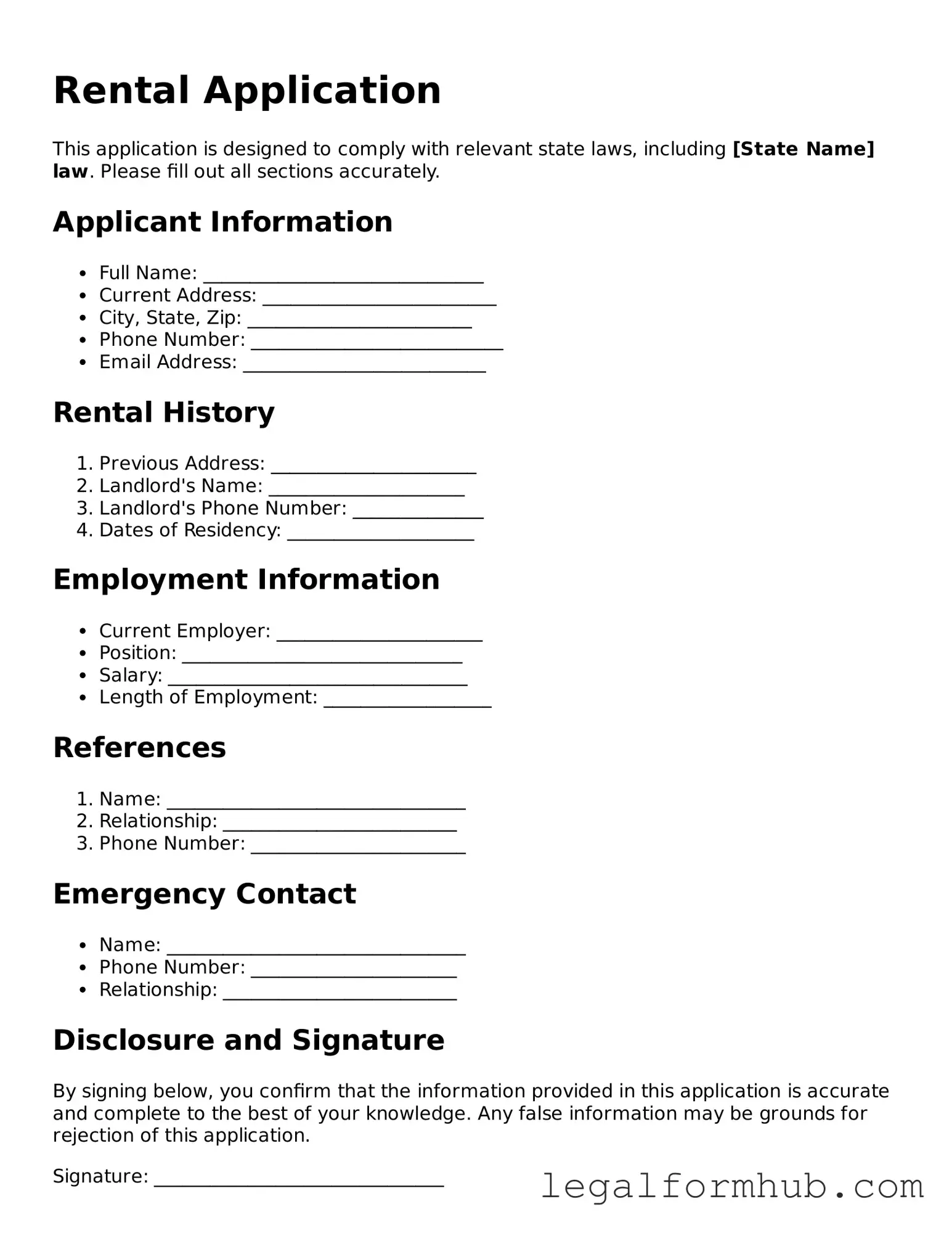The Lease Agreement is a crucial document in the rental process. It outlines the terms and conditions under which a tenant can occupy a property. Like the Rental Application, it collects personal information and establishes responsibilities for both the landlord and tenant. While the application serves to screen potential tenants, the lease formalizes the agreement once a tenant is selected.
The Tenant Screening Report is another document that parallels the Rental Application. It provides a detailed background check on the applicant, including credit history, rental history, and criminal background. Both documents aim to assess the suitability of a potential tenant, ensuring that landlords make informed decisions based on the applicant’s history and reliability.
The Employment Verification Form is similar in that it gathers information about the applicant's employment status. This form is typically completed by the applicant's employer and confirms income and job stability. Like the Rental Application, it helps landlords evaluate whether the applicant can afford the rent and meet financial obligations.
The Guarantor Application is also akin to the Rental Application. This document is used when a tenant needs a guarantor to co-sign the lease. It collects similar personal and financial information about the guarantor, ensuring that there is a backup source of income should the tenant default on payments.
The Credit Application is another related document. It specifically focuses on the applicant's creditworthiness. While the Rental Application gathers broader information about the applicant, the Credit Application hones in on financial history, which is crucial for landlords when deciding if an applicant is a good risk.
The Move-In Checklist is similar in that it documents the condition of the rental property before the tenant moves in. While the Rental Application assesses who will live in the property, the Move-In Checklist ensures that the property is in good condition and that any existing damages are noted, protecting both the tenant and landlord.
In addition to the various rental documents, it's essential to have the right forms in place for a vehicle transaction. The Fill PDF Forms offers a convenient solution for those looking to create a Florida Motor Vehicle Bill of Sale, ensuring that all necessary details are accurately documented for the transfer of ownership.
The Rental Agreement Addendum can also be compared to the Rental Application. This document includes additional terms that may not be covered in the standard lease. Both documents require mutual agreement and signatures, ensuring that all parties are aware of their rights and responsibilities.
The Pet Application is relevant for tenants with pets. It collects specific information about the pet, including breed and size. Similar to the Rental Application, it helps landlords decide whether to approve the tenant based on additional factors that may affect the property.
The Background Check Consent Form is another document that parallels the Rental Application. It allows landlords to perform background checks on applicants. Both documents require the applicant’s consent and aim to ensure that the landlord has the necessary information to make an informed decision.
Finally, the Rental History Verification Form is similar as it seeks to confirm the applicant's previous rental experiences. It collects information from previous landlords about the applicant's behavior and payment history. Like the Rental Application, it helps landlords assess the reliability and responsibility of potential tenants.
